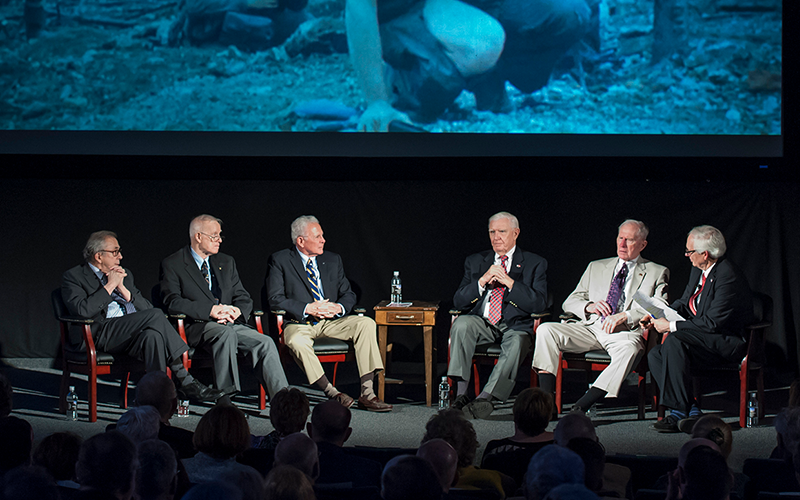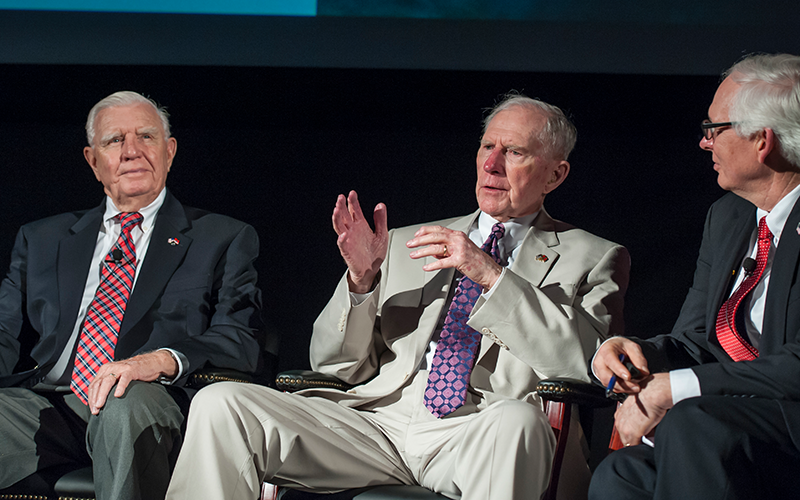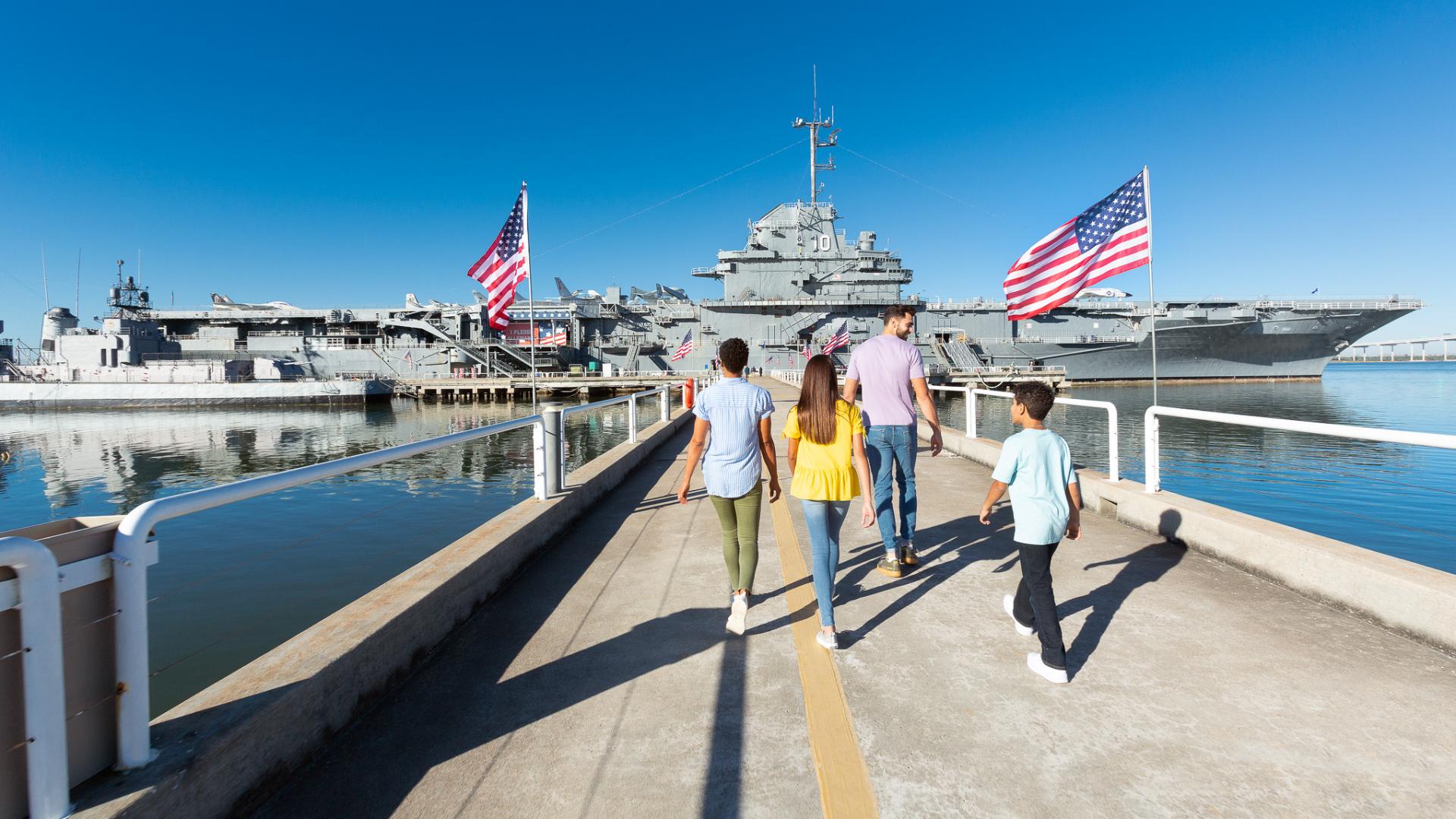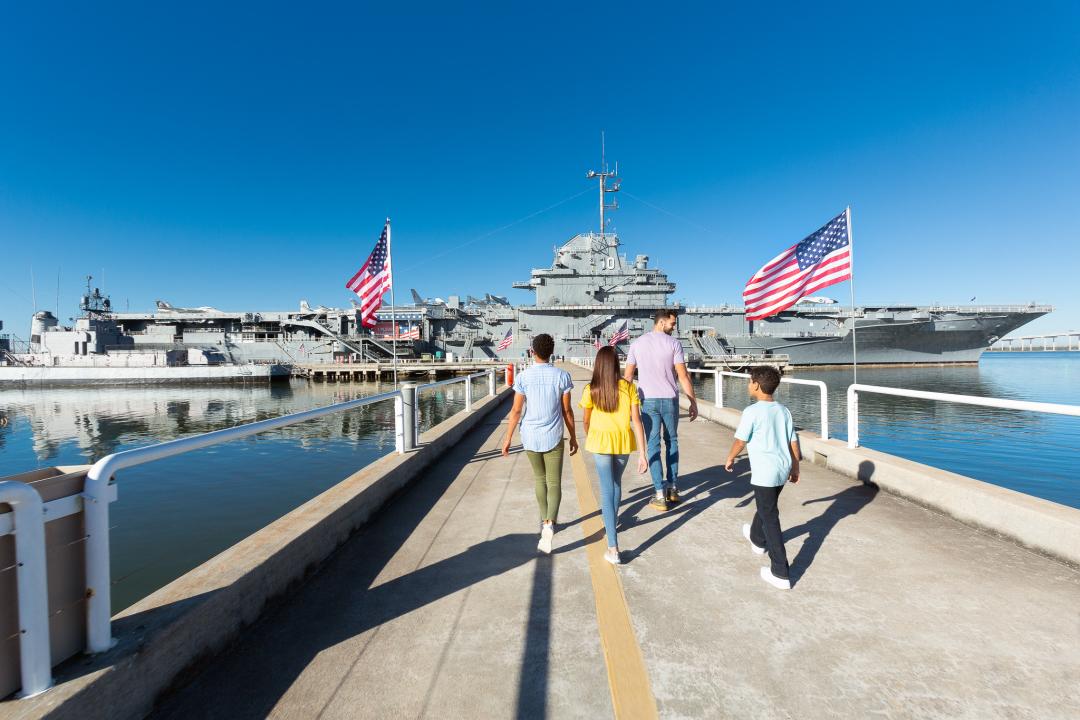
Panelists for the symposium included four Marines who served during the battle – Lt. General Ron Christmas, Colonel Myron Harrington, Jr., Colonel Robert Thompson and Captain Rob Black – and John Olson, an Army photographer for Department of Defense newspaper, Stars & Stripes, who was on the ground much of the battle.
Each veteran detailed their memories of one of the most critical battles of the Vietnam War. Though previous battles had been fought in the jungles, this was the first to come into the city streets and the warfare tactics had to change tremendously. As Col. Thompson explained, “It was a combination of the two worst kinds of combat, in the city and in a jungle. The city was a jungle. You could never spot someone shooting at you until he shot first and you took a casualty.”
Lt. General Christmas recalled how while the fight had changed, the Marines were ready to adapt. “I think it’s a critical point that because of the nature of the Vietnam War we had gone away from urban warfare training,” said Christmas. “For example, all of the lieutenants had had exactly one hour of urban warfare training.” Yet the Marines were able to do what they needed to overcome this change and succeed in a new environment, despite the lack of formal training.
“It comes down to adaptation,” said Christmas. “Young Marines have an amazing ability to adapt to the circumstance and the situation that they are in. And that’s exactly what I saw, and I would suggest that my fellow commanders saw that too.”

The casualties took a heavy toll on the morale of the troops on the ground. Col. Harrington remembered, “We lost 40 percent of our men on the first day.” Still, the Marines fought on and over the course of 26 days, less than 2,500 Marines were able to defeat more than 10,000 deeply entrenched enemy troops in Huế City.
Despite the military victory, in many ways the win on the ground was a loss at home. The increased access for journalists during this battle provided citizens back home with a true and uncensored picture of the war and it was hard for citizens at home to reconcile the loss of life so far from home.
But the commanders appreciated the work of the journalists to get and tell the story. Col. Myron Harrington said of some of the journalists, “Their bravery was fearless.” He added, “I was impressed because they came in and they stayed. They came in and stayed with us for the duration, and they had my utmost respect.”

The lessons learned at Huế continued to help our armed forces for the 50 years that have followed. General Christmas shared, “Post Vietnam, we went through a period … that literally the Army and the Marine Corps went to a doctrine of urban avoidance. It took folks like we have up on the stage and others to force the issue that we are going to fight in urban areas, whether we like it or not.” Over time, this led the Army and the Marine Corps to develop training to properly prepare the troops for fighting effectively in urban areas, using many of the lessons learned at Huế.
“I’m very pleased to tell you, if you look at the past decade, if you look at the fights in Fallujah (Iraq) and Marjah (Afghanistan), what you find is an excellence. You find young men and women who are unbelievable and do some tremendous things--they understand the fight.” Lt. General Christmas attributes the success today with the battle fifty years prior. “This really has come from our experience in Huế and that is good,” said Christmas.
The symposium is part of the ongoing "Ordinary People Doing Extraordinary Things" series offered by Patriots Point's Institute of History, Science & Technology. The symposium is also offered by Patriots Point Naval & Maritime Museum in their role as an official Commemorative Partner of the United States of America Vietnam War Commemoration by the Department of Defense.
To watch the symposium in its entirety, check out our Livestream page here.
See the gallery below for photos from the event:
[gallery columns="2" size="medium" ids="8584,8585,8586,8587,8588,8589,8590,8591,8592,8593,8594,8595,8596,8597,8598,8599,8600,8601,8602"]

